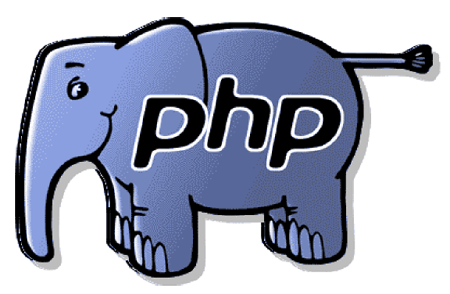Detailed introduction to Zend engine
one. Preface HashTable is the soul of PHP, because HashTable is widely used in Zend engine, such as variable table, constant table, function table, etc., which are adapted to be saved by HashTable. In addition, PHP arrays are also implemented by using HashTble, so , Only by understanding PHP's HashTable can you truly understand PHP. For the convenience of reading, here are the basic concepts that appear in the implementation of HashTable. A hash table is a data structure that maps specific keys to specific values through a hash function. It maintains a one-to-one correspondence between keys and values. Key: An identifier used to manipulate data, such as an index in a PHP array, or a string key, etc. Slot (slot/bucket): A unit in the hash table used to store data, which is the container where the data is actually stored. Hash function: A function that maps keys to the location of the slot where the data should be stored. Hash collision: A situation where a hash function maps two different keys to the same index. PHP
1. PHP Kernel-A brief explanation of the soul of PHP HashTble

## Introduction: 1. Preface HashTable is the soul of PHP, because HashTable is widely used in Zend engine, such as variable table, constant table, function table, etc., which are adapted to be saved by HashTable. In addition, PHP arrays are also implemented by using HashTble, so , Only by understanding PHP's HashTable can you truly understand PHP. For the convenience of reading, here are the basic concepts that appear in the implementation of HashTable. A hash table is a hash function that maps specific keys to
2. PHP Kernel-Zend Engine Detailed Explanation

Introduction: In the previous chapter, we introduced the life cycle of PHP, PHP’s SAPI, and SAPI are at the upper level of the entire PHP architecture, while the real script Execution is mainly done by the Zend engine. In this section we introduce the execution of PHP scripts. Currently, programming languages can be divided into two major categories: the first category is compiled languages such as C/C++, .NET, and Java. Their commonality is: the source code must be compiled before running, and then the compiled target can be run. document. The second category is such as: PHP, Javascript, Ru
##3.[Translation] [php extension development and embedded] Chapter 10 - php4 objects

4.

5.
The principle of modifying the Zend engine to implement PHP source code encryption And practice

6.
PHP7 Parameters, Arrays and Zvals

7. Macro for PHP expansion return value in zend engine Introduction::This article mainly introduces the PHP expansion return value in zend engine Value macros, students who are interested in PHP tutorials can refer to it. 8. In-depth understanding of PHP core II overview-PHP life cycle and Zend engine Introduction::This article The article mainly introduces an in-depth understanding of the PHP core II overview - PHP life cycle and Zend engine. Students who are interested in PHP tutorials can refer to it. 9. In-depth understanding of the PHP kernel - Overview - PHP life cycle and Zend engine Introduction::This article The article mainly introduces an overview of in-depth understanding of the PHP kernel-PHP life cycle and Zend engine. Students who are interested in PHP tutorials can refer to it. 10. Grammar: Implementation of IF judgment ##Introduction:: Grammar: Implementation of IF judgment: When interviewing PHP, I often encounter a question of judging whether various types of null values are true: $a = '';
$a = null
$a = false;if($a){...}
if(isset($a)){...}
if(empty($a)){...}
... Let’s take a brief look at how if is handled in the zend engine from the following example: 
Some questions encountered by PHP programmers learning C
The above is the detailed content of Detailed introduction to Zend engine. For more information, please follow other related articles on the PHP Chinese website!

Hot AI Tools

Undresser.AI Undress
AI-powered app for creating realistic nude photos

AI Clothes Remover
Online AI tool for removing clothes from photos.

Undress AI Tool
Undress images for free

Clothoff.io
AI clothes remover

Video Face Swap
Swap faces in any video effortlessly with our completely free AI face swap tool!

Hot Article

Hot Tools

Notepad++7.3.1
Easy-to-use and free code editor

SublimeText3 Chinese version
Chinese version, very easy to use

Zend Studio 13.0.1
Powerful PHP integrated development environment

Dreamweaver CS6
Visual web development tools

SublimeText3 Mac version
God-level code editing software (SublimeText3)

Hot Topics
 Alipay PHP SDK transfer error: How to solve the problem of 'Cannot declare class SignData'?
Apr 01, 2025 am 07:21 AM
Alipay PHP SDK transfer error: How to solve the problem of 'Cannot declare class SignData'?
Apr 01, 2025 am 07:21 AM
Alipay PHP...
 Explain JSON Web Tokens (JWT) and their use case in PHP APIs.
Apr 05, 2025 am 12:04 AM
Explain JSON Web Tokens (JWT) and their use case in PHP APIs.
Apr 05, 2025 am 12:04 AM
JWT is an open standard based on JSON, used to securely transmit information between parties, mainly for identity authentication and information exchange. 1. JWT consists of three parts: Header, Payload and Signature. 2. The working principle of JWT includes three steps: generating JWT, verifying JWT and parsing Payload. 3. When using JWT for authentication in PHP, JWT can be generated and verified, and user role and permission information can be included in advanced usage. 4. Common errors include signature verification failure, token expiration, and payload oversized. Debugging skills include using debugging tools and logging. 5. Performance optimization and best practices include using appropriate signature algorithms, setting validity periods reasonably,
 How does session hijacking work and how can you mitigate it in PHP?
Apr 06, 2025 am 12:02 AM
How does session hijacking work and how can you mitigate it in PHP?
Apr 06, 2025 am 12:02 AM
Session hijacking can be achieved through the following steps: 1. Obtain the session ID, 2. Use the session ID, 3. Keep the session active. The methods to prevent session hijacking in PHP include: 1. Use the session_regenerate_id() function to regenerate the session ID, 2. Store session data through the database, 3. Ensure that all session data is transmitted through HTTPS.
 How to debug CLI mode in PHPStorm?
Apr 01, 2025 pm 02:57 PM
How to debug CLI mode in PHPStorm?
Apr 01, 2025 pm 02:57 PM
How to debug CLI mode in PHPStorm? When developing with PHPStorm, sometimes we need to debug PHP in command line interface (CLI) mode...
 Describe the SOLID principles and how they apply to PHP development.
Apr 03, 2025 am 12:04 AM
Describe the SOLID principles and how they apply to PHP development.
Apr 03, 2025 am 12:04 AM
The application of SOLID principle in PHP development includes: 1. Single responsibility principle (SRP): Each class is responsible for only one function. 2. Open and close principle (OCP): Changes are achieved through extension rather than modification. 3. Lisch's Substitution Principle (LSP): Subclasses can replace base classes without affecting program accuracy. 4. Interface isolation principle (ISP): Use fine-grained interfaces to avoid dependencies and unused methods. 5. Dependency inversion principle (DIP): High and low-level modules rely on abstraction and are implemented through dependency injection.
 How to automatically set permissions of unixsocket after system restart?
Mar 31, 2025 pm 11:54 PM
How to automatically set permissions of unixsocket after system restart?
Mar 31, 2025 pm 11:54 PM
How to automatically set the permissions of unixsocket after the system restarts. Every time the system restarts, we need to execute the following command to modify the permissions of unixsocket: sudo...
 Explain late static binding in PHP (static::).
Apr 03, 2025 am 12:04 AM
Explain late static binding in PHP (static::).
Apr 03, 2025 am 12:04 AM
Static binding (static::) implements late static binding (LSB) in PHP, allowing calling classes to be referenced in static contexts rather than defining classes. 1) The parsing process is performed at runtime, 2) Look up the call class in the inheritance relationship, 3) It may bring performance overhead.
 How to send a POST request containing JSON data using PHP's cURL library?
Apr 01, 2025 pm 03:12 PM
How to send a POST request containing JSON data using PHP's cURL library?
Apr 01, 2025 pm 03:12 PM
Sending JSON data using PHP's cURL library In PHP development, it is often necessary to interact with external APIs. One of the common ways is to use cURL library to send POST�...






